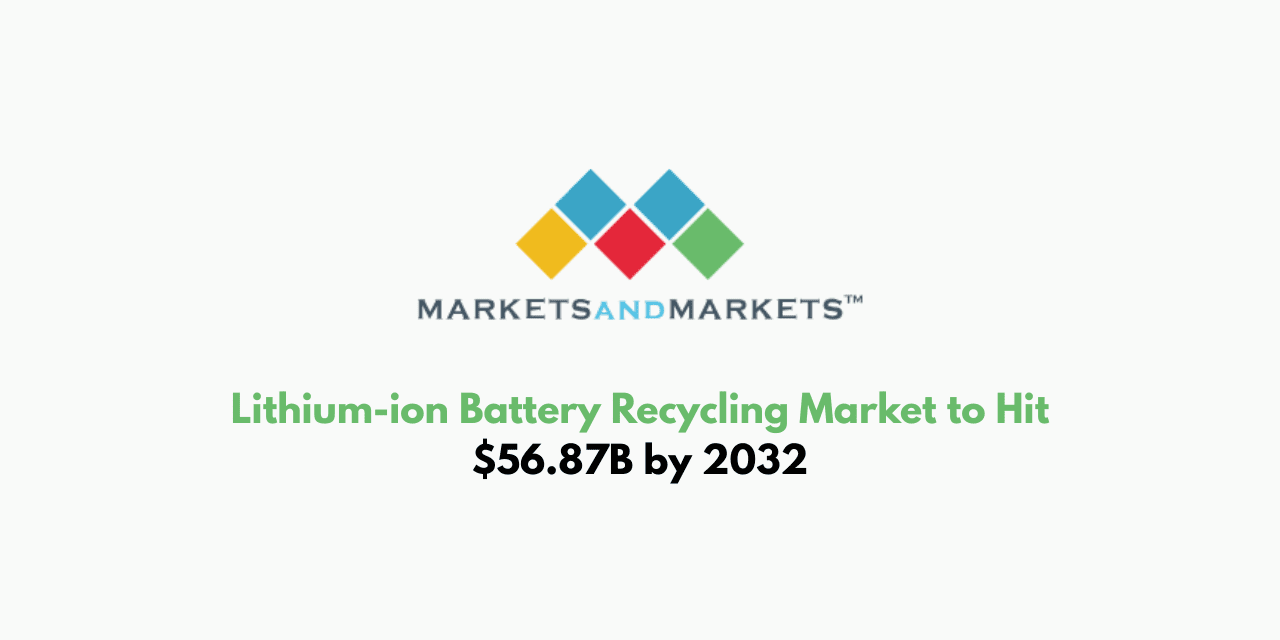The report “Lithium-ion Battery Recycling Market by Source (Automotive, Non-automotive), Battery Chemistry, Battery Components, Recycling Process (Hydrometallurgical Process, Pyrometallurgy Process, Physical/Mechanical Process), and Region – Global Forecast to 2032″, is projected to grow from USD 16.23 billion in 2024 to USD 56.87 billion by 2032, at a CAGR of 17.0% during the forecast period. The market for lithium-ion battery recycling is mostly driven by the growing demand for recycled goods and materials. Sustainable practices are becoming more and more important as environmental awareness rises and rules get stricter. Due to their high concentration of precious metals like nickel, cobalt, and lithium, lithium-ion batteries are now popular candidates for recycling. Battery recycling lessens the environmental effect of battery production and promotes a circular economy by recovering these essential ingredients and lowering the reliance on virgin resources. This increased focus on sustainability is directly driving the market for recycled lithium-ion batteries.
Browse
- 134 Market data Tables
• 60 Figures
• 199Pages and in-depth TOC on “Lithium-ion Battery Recycling Market – Global Forecast to 2032”
Some of the prominent key players are:
- Glencore (Switzerland),
- Umicore (Belgium),
- Cirba Solutions (US),
- Contemporary Amperex Technology Co., Ltd. (China),
- RecycLiCo Battery Materials Inc. (Canada), and many more….
Opportunity: Rising adoption of lithium-ion batteries due to declining prices
The declining costs of lithium ion batteries can act as opportunities of growth in the lithium ion battery recycling market.According to a recent industry survey by BloombergNEF, the average cost of a lithium-ion battery pack was reduced to USD 137 per kWh in 2020 compared to the earlier USD 181 per kWh. Due to developments in battery technology over the last decade, battery pack prices have declined 88% since 2010. BloombergNEF projects that battery pack prices are expected to reduce to USD 58 per kWh by 2030 and to USD 44 per kWh by 2035. Tesla Motors Inc. (US) has undertaken developments such as the inception of the Gigafactory-1, which includes the increased production of lithium-ion batteries in 2018 compared to 2013. This is expected to help reduce the prices of lithium-ion batteries.
By End Use Industry, the Non-residential segment accounted for the largest share in 2021
Non-residential structures are those structures that are not used for living purposes. The non-residential structures include industrial structures and commercial structures. The industrial structures include factories, mills, and warehouses. On the other hand, commercial structures include office buildings, hotels, shopping malls, casinos, and convention & exhibition centers. Nowadays, rising urbanization, rising concerns towards sustainability, aesthetic appeal, safety issues, and energy-efficient structures.
Asia Pacific accounted for the largest share of the Facade Systems Market in 2021
Because of growing developmental activities, rapid economic expansion, and increasing population in the Asia Pacific region, which demands residential and non-residential structures workspaces, which, in turn, are expected to lead the growth of the facade systems market. Owing to the increasing income of people in this region, the demand for aesthetic workspaces, which comes under the non-residential sector, has been escalating.

